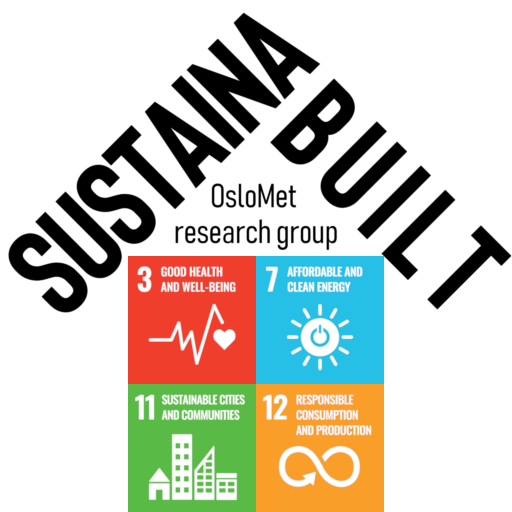Faculty Dissemination (Professional and Public Outreach)
2017 ▲▼
Anders Benteson NYGAARD (2017) “Mikroorganismer i norsk barnehagestøv: Venn eller fiende?” [Language NO]. Lecture at Nasjonal Inneklimakonferanse in Oslo, 2017-05-09
Abstract not available
Anders Benteson NYGAARD, Colin CHARNOCK (2017) “Indoor climate in kindergartens: Bacterial composition of floor dust”🔓. Talk at Healthy Buildings Europe 2017 in Lublin, ISBN 978-83-7947-232-1 …
Abstract: This study explores the bacterial composition of floor dust in different rooms of a kindergarten over the course of a year, utilizing DNA sequencing techniques to analyze microbial diversity. The research aims to understand how built environments influence microbial exposure, particularly for young children who are more likely to come into contact with floor dust. The findings show variation in bacterial communities across different rooms and highlight the significance of this exposure in shaping children’s developing microbiota, with implications for designing healthier built environments.
Anders Benteson NYGAARD (2017) “Bacteria in Norwegian kindergartens: Small children and their microbial Environment”🔓. Lecture at MOBE Symposium 2017 in Washington DC, 2017-10-10 …
Abstract: Anders Benteson Nygaard gives an interesting talk about bacteria in Norwegian kindergartens: Small children and their microbial environments. This was recorded at the MoBE 2017 symposium in Washington D.C. If you’re interested, check out all of the other speakers from MoBE 2017 on our YouTube channel!
Anders Benteson NYGAARD, Colin CHARNOCK (2017) “Microbiome Analyses of Kindergarten Classrooms using QIIME and Phyloseq”. Poster at MetaSUB 2017, Stockholm, 2017-07-18 …
Abstract: This study investigated the bacterial composition of floor dust rooms in a recently constructed kindergarten. We hypothesized that the three different room types would exhibit differing bacterial composition due to the different intended uses of each room type, and that a development in the bacterial composition could be observed over time, as the building becomes occupied by its primary occupants, children. Samples were collected five times during the course of one year in one kindergarten. Settled floor dust samples were collected from three separate rooms, one kitchen, one toilet, and one activity room. Total DNA was extracted and the bacterial community diversity of the samples was analyzed using 16S rRNA gene sequencing. Sequence data was processed and analyzed using QIIME and Phyloseq. Results indicate that the bacterial composition in the three rooms varies, with the bacterial composition of the kitchen showing the highest degree of variation from the toilet and the activity room. The bacterial composition for each room remains relatively stable when during the course of the sampling period. We also find a high prevalence of human-health related bacteria, such as Corynebacterium, Staphylococcus, Propionibacterium, and Streptococcus in most of the rooms.
Mads MYSEN, Sverre Bjørn HOLØS, Aileen YANG, Kari THUNSHELLE (2017) “BEST VENT. Valg av Vmin ved behovsstyrt ventilasjon” [Language NB]. Norsk VVS, Vol.60 (no.6), p.14-15
Abstract not available
Alex GONZÁLEZ CÁCERES, Jan KARLSHØJ, Tor Arvid VIK (2017) “The Potential in the Use of Building Information Modelling and Life-Cycle Assessment for Retrofitting Buildings: A Study Based on Interviews with Experts in Both Fields”🔓. in 19th International Conference on Sustainable Architecture and Urban Design – Stockholm, Sweden, July 2017, World Academy of Science, Engineering and Technology (WASET), Vol.11 (no.7): , Art.48534, p.866-870 …
Abstract: Life cycle of residential buildings are expected to be several decades, 40% of European residential buildings have inefficient energy conservation measure. The existing building represents 20-40% of the energy use and the CO₂ emission. Since net zero energy buildings are a short-term goal, (should be achieved by EU countries after 2020), is necessary to plan the next logical step, which is to prepare the existing outdated stack of building to retrofit them into an energy efficiency buildings. In order to accomplish this, two specialize and widespread tool can be used Building Information Modelling (BIM) and life-cycle assessment (LCA). BIM and LCA are tools used by a variety of disciplines; both are able to represent and analyze the constructions in different stages. The combination of these technologies could improve greatly the retrofitting techniques. The incorporation of the carbon footprint, introducing a single database source for different material analysis. To this is added the possibility of considering different analysis approaches such as costs and energy saving. Is expected with these measures, enrich the decision-making. The methodology is based on two main activities; the first task involved the collection of data this is accomplished by literature review and interview with experts in the retrofitting field and BIM technologies. The results of this task are presented as an evaluation checklist of BIM ability to manage data and improve decision-making in retrofitting projects. The last activity involves an evaluation using the results of the previous tasks, to check how far the IFC format can support the requirements by each specialist, and its uses by third party software. The result indicates that BIM/LCA have a great potential to improve the retrofitting process in existing buildings, but some modification must be done in order to meet the requirements of the specialists for both, retrofitting and LCA evaluators.
